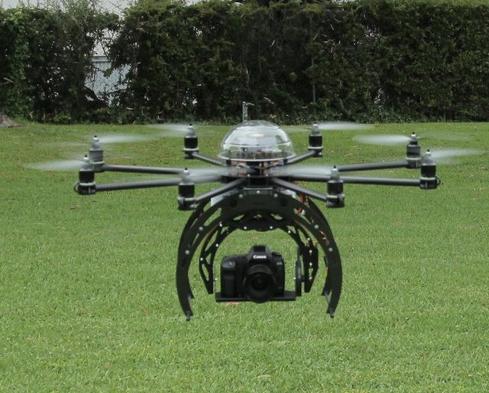Microsoft Accidentally Tips Windows 9
With Windows 8 adoption still limping along and a quickly removed blog reference to "Windows 9," is Microsoft about to launch its next operating system?


Quiz: Spot The Real Tech Headlines
Quiz: Spot The Real Tech Headlines (Click image for larger view and slideshow.)
Windows 8 and 8.1 gained market share in August but adoption remains sluggish, according to the latest numbers from web-tracking firm Net Applications. With its newest flagship still struggling, Microsoft appears to be gearing up for the next version. Early Tuesday, the company posted -- and quickly deleted -- its first official reference to "Windows 9."
In a message posted to Chinese social media site Weibo, Microsoft China displayed a Windows 9 logo, along with text that asks if the Start menu, an addition Microsoft confirmed will be in the "next version" of Windows, will make a comeback. Given that Microsoft has since removed the post, which was first reported by Cnbeta, the message appears to have been inadvertently published. In an ostensibly similar slipup earlier this year, Microsoft left references to a "Surface Mini" -- a product that has never been announced -- in Surface Pro 3 documentation.
In response to InformationWeek's request for comment regarding the Weibo post, a Microsoft rep said the company has nothing to share.
[Learn how the next Windows OS will trickle down to mobile devices. Read Windows Threshold May Merge Windows Phone, RT.]
If Microsoft is rushing toward Windows 9, it's easy to see why: Windows 8 and 8.1 are still a distant third in the operating system race. According to Net Applications, the two OSs combined last month for 13.37% of PC users, up about .9 percentage points relative to July. With back-to-school sales in swing and plenty of cheap new Windows devices on the market, Windows 8 and 8.1's gains aren't surprising. Despite the improvement, Windows 8 and 8.1 adoption trails the pace that Windows Vista set several years ago. At the same point in its release cycle, the famously maligned Vista had a slightly larger percentage of the Windows user base than Windows 8 and 8.1 have today.
Windows 7 remained the dominant OS in August, with 51.21% of PC users, which was flat compared with July. Windows XP ranked second -- the seemingly immortal OS dropped nearly one percentage point but still holds nearly 24% of all users. That's down significantly from the 33.6% share it claimed at this point in 2013 but it's clear that Microsoft's efforts to get users to upgrade have not worked.
Traditional PC users, many of whom have shunned Windows 8 and 8.1, should know within weeks whether they'll find the next version of Windows more appealing. Various sources claim that this fall, Microsoft will launch a preview of its next OS, which is codenamed Threshold. The company has not confirmed these plans.
Until Tuesday's Weibo image surfaced, it hadn't been clear if Microsoft intended to brand Threshold as Windows 9. Company leaders have reportedly considered calling it "Windows 8.2," or perhaps even just "Windows," given recent indications that Microsoft plans to update its OS in rapid iterations, like a web browser, rather than in large chunks every few years, as it has traditionally done. Based on Microsoft China's deleted Windows 9 reference, the company will be sticking with traditional numbered versions for now, a tactic that might distance the new OS from Windows 8's bad reputation.
Expected as a final release in 2015, Windows 9 reportedly will exclude Windows 8's Charms bar, add support for virtual desktops, include a version of Windows Phone 8.1 virtual assistant Cortana, and load different UIs depending on the type of device on which it is running. Microsoft already has confirmed that the next iteration of its desktop UI will include the ability to run Modern apps in floating windows, like legacy applications. Microsoft is also expected to release Windows 9 in versions for both ARM and x86 processors.
Beyond the ostensible Weibo gaffe, Microsoft China has also been in the news because it is currently under scrutiny from local authorities, who allege Windows and Office violate the country's anti-trust laws. Reuters reported Monday that China's State Administration for Industry and Commerce has given Microsoft 20 days to respond in writing to "compatibility" concerns regarding its OS and productivity suite. Windows is widely used in China, thanks largely to rampant piracy, but the country's government is currently developing its own operating system, ostensibly to relieve its reliance on companies such as Microsoft and Google. Earlier this year, Chinese officials also banned the use of Windows 8 on government machines. Given this background, industry watchers have debated whether the monopoly claims are valid or part of China's nationalist agenda. Microsoft CEO Satya Nadella will reportedly travel to China later this month.
Interested in shuttling workloads between public and private cloud? Better make sure it's worth doing, because hybrid means rethinking how you manage compliance, identity, connectivity, and more. Get the new New Tactics Needed For Hybrid Cloud Security issue of InformationWeek Tech Digest today (free registration required).
About the Author(s)
You May Also Like
How to Amplify DevOps with DevSecOps
May 22, 2024Generative AI: Use Cases and Risks in 2024
May 29, 2024Smart Service Management
June 4, 2024







